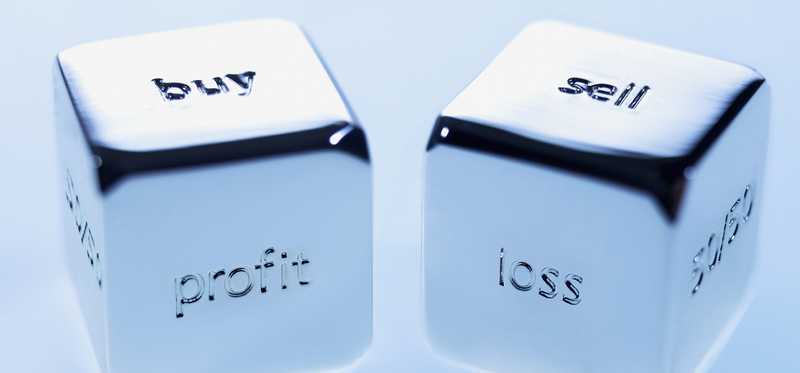15 Things to Consider Before You Buy Any Stock

15 Things to Consider Before You Buy Any Stock
There’s never been a better time to invest in the stock market
Over the last year, the stock market has delivered a series of record-setting days, not only erasing losses from the historic crash in March 2020 but marking never-before-seen highs. The truth is, it’s an exciting time to invest in the stock market.
Whether you’re a newbie to the investing world or veritable stock trading aficionado, it’s important to always conduct your due diligence before you invest your hard-earned cash in any stock.
Without further ado, here are 15 key factors you should consider each and every time before you buy a new stock.
5 Winning Stocks Under $49
We hear it over and over from investors, “I wish I had bought Amazon or Netflix when they were first recommended by the Motley Fool. I’d be sitting on a gold mine!” And it’s true. And while Amazon and Netflix have had a good run, we think these 5 other stocks are screaming buys. And you can buy them now for less than $49 a share! Simply click here to learn how to get your copy of “5 Growth Stocks Under $49” for FREE for a limited time only.
Previous
Next

1. Assess your current nest egg
You don’t have to choose between saving and investing -- you should be doing both. With that being said, if you find yourself in a position where you’re evaluating a new stock to buy and your current nest egg is lacking, you should consider how the stock could contribute to your overall savings strategy, as well as your long-term investment goals. If your emergency fund is running low or nonexistent, it may be wise to focus on building this up for the moment before you pump more of your hard-earned money into the stock market.
Another way to build your cash reserves and stock portfolio at the same time is to invest in quality dividend stocks. By investing in stocks with a solid track record of both raising and paying cash dividends, you can create a secondary source of income while you grow your portfolio.
Previous
Next

2. Evaluate outstanding debt
Just as you should consider the state of your current nest egg before you spend money on a new stock, you should also evaluate the outstanding debt you owe. You certainly don’t need to be debt-free before you invest in the stock market. In fact, certain investments such as high-growth stocks or dividend-paying stocks can maximize your investment returns and even help you to pay down existing debt.
However, reducing your debt should always be a priority, particularly high-interest forms of debt. If you carry substantial high-interest debt or have a notable amount of debt coming due in the near future, it may be best to work on whittling this down before you shell out more money toward your investment portfolio.
Previous
Next

3. Thoroughly research the stock or stocks you’re considering
It’s imperative to thoroughly research any stock or stocks you’re contemplating adding to your portfolio. There are many aspects to researching a stock, both from a fundamental analysis standpoint and from a business perspective.
Key figures such as revenue, earnings, debt, and liquidity are all important to consider when investing in stocks, but you should also examine components outside of the company’s balance sheet that could impact and inform its viability as a long-term investment.
For example, you should familiarize yourself with the company’s history, its position and market share in its respective industry or industries, the demand for and continued profitability of its products, and its future growth potential. After you’ve fully acquainted yourself with the stock, also consider whether the investment is the right addition to your portfolio based on your current portfolio goals, appetite for risk, and strategy of diversification.
Previous
Next

4. Make sure you have a solid investment strategy in place
If you’re a brand-new investor and starting with a sum of even just a few hundred dollars, you should still make sure you have a solid investment strategy in place before you put your hard-earned cash into the stock market. A long-term investment mindset is one of the single most vital ingredients to building true and sustainable wealth through the stock market.
Beyond this basic investing thesis, there are a variety of personal investment strategies that one might utilize to realize and maintain maximum portfolio growth. Some investors prefer to focus on growth stocks (companies that deliver above-average earnings and revenue growth) while others favor the allure of value stocks.
Dividend investing is another excellent strategy to achieve optimal portfolio performance with high-quality stocks that pay monthly or quarterly cash dividends to shareholders. Diversification is key with investing, and many of the most successful investors use an amalgamation of these three approaches when buying stocks.
Previous
Next

5. Expect and accept the existence of investment risk
There are a host of rewards that can come with trading stocks, and it’s no secret that the stock market has made more than its fair share of investors millionaires. But as with most things in life, investing is not without risk.
Investors don’t need to and shouldn’t fear the existence of risk. Rather, accept that risk is an inevitable part of investing. Determine how the presence of risk will impact your personal investment strategy, the type of investor you want to be, and the risk profile of the stocks you buy.
5 Winning Stocks Under $49
We hear it over and over from investors, “I wish I had bought Amazon or Netflix when they were first recommended by the Motley Fool. I’d be sitting on a gold mine!” And it’s true. And while Amazon and Netflix have had a good run, we think these 5 other stocks are screaming buys. And you can buy them now for less than $49 a share! Simply click here to learn how to get your copy of “5 Growth Stocks Under $49” for FREE for a limited time only.
Previous
Next

6. Look for dividends, value, or growth
Any stock you introduce to your portfolio should serve a purpose. Whether you’re trying to increase your collection of dividend stocks, add a few undervalued gems to your basket, or capitalize on some quality growth plays, always consider how a potential buy fits into your long-term investing strategy.
Previous
Next

7. Analyze and buy stocks according to your personal risk tolerance
Determining how much risk you’re willing to introduce into your portfolio is a very personal choice. Some investors prefer to focus primarily on more risk-averse, slower-growth investments such as value stocks or blue chip stocks. These types of companies tend to deliver moderate but consistent returns, while generally exhibiting a much higher level of recession resilience.
Growth stocks can fall on either end of the risk spectrum. For example, certain growth stocks in industries like the technology sector frequently deliver above-average returns while also remaining consistently profitable even in times of market turmoil.
Whatever your tolerance for risk might be, it’s important to assess where you stand and what percentage of your portfolio (if any) you would like to represent high-risk, high-reward investments. Higher-volatility investments should constitute a much smaller portion of your portfolio and be balanced by a solid selection of premium companies with a track record of consistently delivering value, growth, and/or dividends to shareholders.
Previous
Next

8. Every investor makes mistakes
No investor bats a thousand every time, and even the most seasoned investors make mistakes from time to time. While some errors may impact your portfolio more than others, try to look at each one as a lesson rather than a failure. There’s no perfect way to invest in the stock market, and there’s no such thing as a perfect investor. Learn from your mistakes and apply those lessons to pursue future investment wins.
Previous
Next

9. There’s no such thing as a perfect stock
Even after you’ve fully researched a stock, that doesn’t mean there won’t be a few areas where you feel a company has room to grow. The truth is, there’s no such thing as a perfect stock.
When buying stocks, focus on high-quality companies with a solid track record of balance sheet growth that can continue expanding their products and services while delivering consistent returns for shareholders.
Previous
Next

10. Review the company’s financial statements
When you’re researching a stock as a potential addition to your investment portfolio, don’t forget to look at the company’s past financial statements. From basic figures like the company’s top and bottom lines down to more nuanced metrics such as cash statements, these financial documents will prove invaluable to your overall analysis and enable you to gain a much clearer picture of the company’s past and future growth story.
5 Winning Stocks Under $49
We hear it over and over from investors, “I wish I had bought Amazon or Netflix when they were first recommended by the Motley Fool. I’d be sitting on a gold mine!” And it’s true. And while Amazon and Netflix have had a good run, we think these 5 other stocks are screaming buys. And you can buy them now for less than $49 a share! Simply click here to learn how to get your copy of “5 Growth Stocks Under $49” for FREE for a limited time only.
Previous
Next

11. Fundamental stock analysis is key for the long-term investor
Getting into the nitty-gritty of a stock may not be the most glamorous aspect of researching a potential stock buy, but it’s nonetheless an important step in your investment journey. When you’re considering a stock for your portfolio, it’s important to look beyond its price to assess the company’s true value and its viability as a long-term investment.
A stock isn’t automatically an excellent buy because it’s either cheap or expensive. This is where fundamental analysis comes into play.
There are a variety of metrics you can utilize to value a stock. This is a crucial step to factor into your decision-making process when considering a stock for your portfolio, as it enables you to reach a more educated estimation of the company’s ability to deliver consistent gains to its shareholders for years to come.
Previous
Next

12. Get to know the industry of any stock you’re considering and its place in it
The numbers don’t tell the whole story when it comes to buying stocks. Before you take the plunge and buy a particular stock, consider what competitive edge the company has in relation to the broader sector it operates in. A company’s competitive advantage is a vital determinant of a business’s future growth potential, which can impact both its balance sheet and its stock price over the long haul.
Previous
Next

13. The stock’s vulnerability to market shifts, corrections, and crashes
Another aspect you want to consider when buying a stock is the recession resilience of its business and the sector or sectors it operates in, as well as how that specific company has performed in past market downturns. More than ever, investors are flocking to buy up shares of companies that exhibit recession-resilient qualities and can consistently deliver growth and profits even in periods of market upset.
The stock market crash of 2020 reiterated that certain sectors are more vulnerable to recessions than others. Stocks in sectors like healthcare, tech, and e-commerce consistently outperformed the market, while travel stocks and brick-and-mortar retail stocks plummeted. Just because a stock is more vulnerable to volatility in a recession doesn’t automatically make it a bad buy, but these are factors to be aware of and factor into your thinking when balancing risk in your portfolio.
Previous
Next

14. Your willingness to hold the stock for three to five years at minimum
Another basic benchmark when considering a stock for your portfolio is whether it fits into your long-term buy-and-hold strategy. You should never hold a stock for less than three to five years at the bare minimum.
If you’re evaluating a stock but aren’t willing to hold it for at least that period, you should examine the concerns you have about the company and whether your long-term assessment of it outweighs those concerns or another stock might be a better investment for your hard-earned money.
ALSO READ: 2 Stocks That Are Perfect to Buy Now and Hold Until Retirement
Previous
Next

15. The stock’s place in your overall portfolio and investing strategy
Once you’ve established a clear investing strategy, it follows that you should buy stocks that fit into this overarching investment philosophy. Before you buy a stock, aside from researching it in full as we’ve discussed in the previous slides, also consider where the company fits into your portfolio growth goals.
For example, does the company fit with the risk profile you’ve targeted for your portfolio? Will the stock add high growth, value, and/or dividends to your basket? What history of growth does the stock bring to the table that could potentially inform your future portfolio returns?
5 Winning Stocks Under $49
We hear it over and over from investors, “I wish I had bought Amazon or Netflix when they were first recommended by the Motley Fool. I’d be sitting on a gold mine!” And it’s true. And while Amazon and Netflix have had a good run, we think these 5 other stocks are screaming buys. And you can buy them now for less than $49 a share! Simply click here to learn how to get your copy of “5 Growth Stocks Under $49” for FREE for a limited time only.
Previous
Next

Building a portfolio that stands the test of time
Constructing a rock-solid portfolio doesn’t happen overnight. You may find that your investment strategy and the risk profile of your portfolio need rebalancing from time to time. The types of stocks you like to buy may change over time as well.
The key is to focus on the long-term horizon when building your portfolio. Shut out investor panic and keep calm when market headwinds arise.
Make your money work for you and only invest in companies that you really believe are the best use of your hard-earned cash. To quote Warren Buffett, “An investor should act as though he had a lifetime decision card with just twenty punches on it.”
The Motley Fool has a disclosure policy.
Previous
Next
Invest Smarter with The Motley Fool
Join Over Half a Million Premium Members Receiving…
- New Stock Picks Each Month
- Detailed Analysis of Companies
- Model Portfolios
- Live Streaming During Market Hours
- And Much More
READ MORE
HOW THE MOTLEY FOOL CAN HELP YOU
-
Premium Investing Guidance
Market beating stocks from our award-winning service
-
The Daily Upside Newsletter
Investment news and high-quality insights delivered straight to your inbox
-
Get Started Investing
You can do it. Successful investing in just a few steps
-
Win at Retirement
Secrets and strategies for the post-work life you want.
-
Find a Broker
Find the right brokerage account for you.
-
Listen to our Podcasts
Hear our experts take on stocks, the market, and how to invest.
Premium Investing Services
Invest better with The Motley Fool. Get stock recommendations, portfolio guidance, and more from The Motley Fool's premium services.